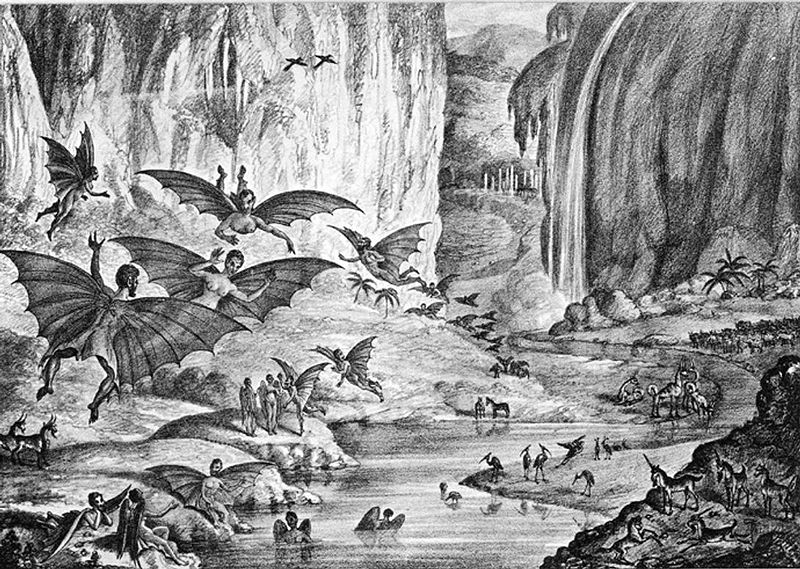[/caption]
Say the words “Moon Hoax” these days, and everyone thinks you are talking about the people who don’t believe the Apollo astronauts ever went to the Moon. But back in 1835 there was the original Moon hoax that thousands of people fell for, despite the tall tale being complete fiction. A series of articles were published in the New York Sun newspaper reporting incredible new astronomical observations of the Moon supposedly made by astronomer Sir John Herschel during an observing run at the Cape of Good Hope with his powerful new telescope. Detailed descriptions of winged beings, plants, animals and a sapphire temple increased sales and subscriptions to the fledgling newspaper.
Here’s a selection from one of the articles:
“We counted three parties of these creatures, of twelve, nine and fifteen in each, walking erect towards a small wood… Certainly they were like human beings, for their wings had now disappeared and their attitude in walking was both erect and dignified… About half of the first party had passed beyond our canvas; but of all the others we had perfectly distinct and deliberate view. They averaged four feet in height, were covered, except on the face, with short and glossy copper-colored hair, and had wings composed of a thin membrane, without hair, lying snugly upon their backs from the top of the shoulders to the calves of their legs.”
The descriptions were allegedly reprinted from the nonexistent Edinburgh Journal of Science, and only several weeks after the articles were published did questions arise about the truth of these tales. The newspaper did not issue a retraction back then, and now, even over 175 years later has not issued a full retraction of it, either.
It is said that Herschel was initially amused by the hoax, noting that his own real observations could never be as exciting. But he became annoyed later when he had to answer questions from people who believed the hoax was serious.
To be honest, I had not heard of this hoax until it was discussed by professor Rob Knop in today’s 365 Days of Astronomy podcast. He does a great job telling the story, so it is definitely worth a listen.
Sources: 365 Days of Astronomy, HistoryBuff, Wikipedia



